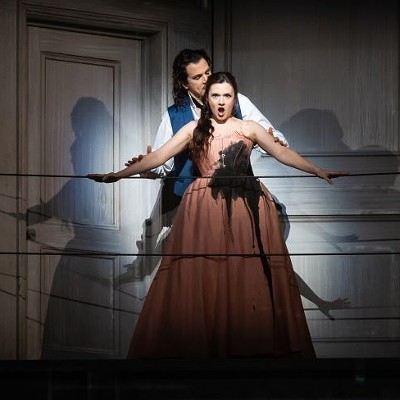Contemporary photographer Joseph Mills utilizes a combination of documentary and collage techniques to realize his surreal street-level images. A handful of photographs recently on display at the Museum of Fine Arts Houston include images from his "Inner City" project presenting documentation and visually poetic interpretation of street life and street people in Washington D.C. circa the late 1980s. At that time, like many of the subjects of these photos, Mills was struggling with mental illness. Looking at his work, sometimes subtle, sometimes jarring collages of photographs mounted on aged paper or found objects, you get the unnerving feeling of being unable to determine with your own eyes what is "real" and what isn't. Mills' "Inner City" series is an extension of his earlier, and more extreme, surreal creations (like the untitled image of a boy with steam blasting out of his ears) that call to mind the work of Max Ernst or Alexander Rodchenko.
According to at least one interview, Mills has explored creating experimental music using the electric guitar and a multi-track recorder. This inspired us to consider a few surreal works for sound and music that similarly combine documentary and collage techniques.
Étude au chemin du fer
Pierre Schaeffer's Étude au chemin du fer (Railway Étude) (1948) may be the first example of musique concrète, a technique of composition consisting entirely of taped sound cut and edited by hand. Sounds used in the early days of this music were considered to be "concrete" sounds which even if clearly identifiable by the casual listener, could be transformed through cuts and splices into something more abstract. But when you hear a train whistle, it sounds like a train whistle, right? No matter the extent of your life experience, you will react emotionally and intellectually to a "concrete" sound not as an abstraction, but as something, recognizable. Even if it's been cut up, rearranged, and/or reversed.
Place Des Abbesses
Realized in 1977 by French composer Luc Ferrari, the tape piece Place Des Abbesses is a "portrait" of a place and people uses documentary techniques, but is meant to be "evocative rather than descriptive." Quiet and heavily delayed voices appear in sections of this nearly 25 minute piece. But Ferrari mainly uses wind instruments, hand percussion, and keyboards to present his impression of a small square located between "the Sacred Heart of God and Saints, and the Pigalle of licentiousness and sex." In Place Des Abbesses, Ferrari's homemade and somewhat primitive Paris studio is itself a part of the poetry of the music. The relatively antiquated quality of Place... as well as Étude au chemin du fer bring to mind the contemporary aesthetic found in hip-hop and artists such as PJ Harvey or Tom Waits that embraces distressed, damaged, and otherwise aged fidelity.
Knuckleheadz
Probably no other hip hop group has done more to embrace the techniques of documentation, collage and surrealism than Staton Island's Wu-Tang Clan. On RZA (real name Robert Diggs) produced masterpieces "Enter The Wu-Tang (36 Chambers)" and Raekwon's "Only Built For Cuban Linx..." improvised and scripted dialogue as well as sampled dialogue from Kung Fu and Italian gangster films introduce and segue the tracks as they are an integral part of rapping and music. Throughout RZA's productions, what is real, memory, dream, hallucination, or just on late night TV after everyone has passed out, is combined and recombined with the same poetic license exercised in any other artistic medium.
A friendly argument, gunshots, and an eventual car crash are all components to the mix that is Knuckleheadz. Listening to this track can be as unnerving and as disorienting an experience as viewing a Joseph Mills photograph. (Although when the bassline drops at 0:15 into the track, you'll probably start bobbing your head.)
Knuckleheadz from "Only Built For Cuban Linx..."





